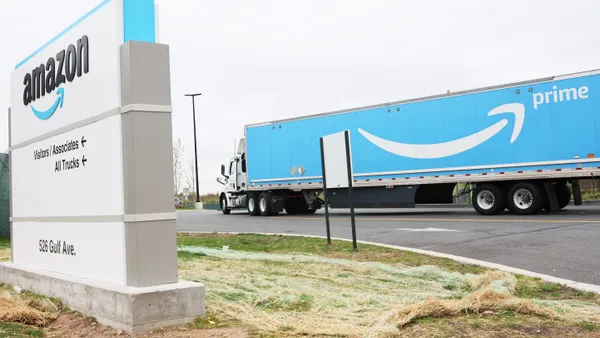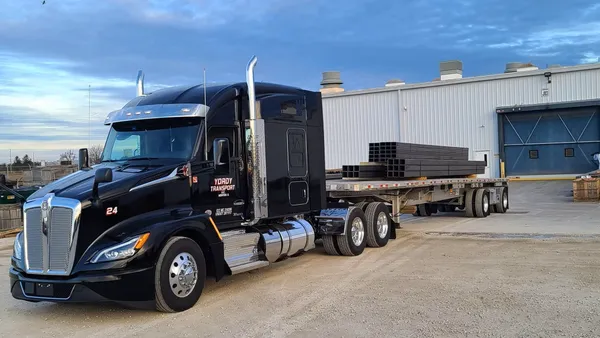Despite some promising signs for a turnaround in the trucking market, improvement in demand is needed to bring the trucking industry out of a roughly two-year freight recession, analysts say.
That sluggishness means pricing is expected to stay relatively flat for less-than-truckload and truckload rates in Q4, according to the TD Cowen/AFS Freight Index.
“LTL demand remains soft and no major market shifts are expected for LTL in Q4,” the 3PL said in an October report on the index. “Despite some signs of recovery, truckload demand remains sluggish.”
A monthly TL rate per mile index from TD Cowen/AFS Freight peaked in early 2022 during the COVID-19 pandemic before finding a floor in mid-2023. It’s been bouncing along a trough for over a year.
“I think the consumer feels very uncertain around their own economic conditions as well as, let's say, what happens via the election, tax policy from a consumer perspective, tax credits, etc.,” Amar Mehta, a partner with accounting giant EY, told Trucking Dive.
Even businesses are showing reservations. M&A deal volumes across North America freight business have receded in 2024 and are projected to be half of what they were in 2023, Mehta said. Bankruptcy concerns have pushed firms to focus more on addressing cost structures, as opposed to seeking consolidation, he said.
“One of the things that could impact the M&A market and the overall freight logistics market, it will be around where these elections go,” he also said, both in the U.S. and across the globe.
Nevertheless, U.S. consumer spending on retail and food in September compared to a year ago showed some encouraging signs, analysts said in reports.
“Consumers are in a good spot and behaving well,” Rob Haworth, senior investment strategist for U.S. Bank Asset Management Group, said in a report earlier this month. “We may not see massive acceleration in consumer spending, but we don’t need that to keep the economy on track.”
While carriers have picked up on retail freight, they have been waiting for a rebound in manufacturing, which plays a critical role in trucking’s bottom line. In residential construction, for example, housing completions rose in September but momentum failed to significantly gather in new residential builds. Meanwhile. overall manufacturing continued in a deteriorating business environment.
“2024 demonstrates the central role that domestic manufacturing activity continues to play in generating the freight that for-hire trucking companies haul,” Michigan State University supply chain management professor Jason Miller told Trucking Dive in an email.
While containerized imports have been up about 10% compared to last year, the current year has been characterized as a shippers’ market, Miller wrote.
Challenging transportation dynamics were further evidenced by a for-hire trucking ton-mile index led by Miller and University of Tennessee, Knoxville, supply chain management professor Yemisi Bolumole. Their index suggested demand for trucking services will see some seasonal improvement but not a monumental uptick.
“We have seen some softening of demand in general due to inflationary reasons in the transportation sector,” Bolumole told Trucking Dive.
The index reflects over 40 sectors, from machinery manufacturing to petroleum wholesalers, but it excludes certain modes, such as drayage.
Freight volumes have trended horizontally, skipping along a trough, Miller wrote on LinkedIn. “Assuming a few more interest rate cuts, there is the chance for a true increase in freight demand to start materializing in March or April,” he added.















